MWC 2014. App Planet. Intel Software
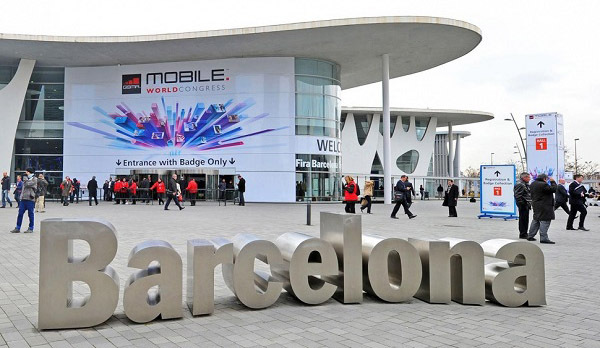
In normal times, such a relaxed and slowly helpful Barcelona now meets me with arrogant work and concentrated ignorance. This means that it’s time for the Mobile World Congress - those five days a year, when the cheapest hotel a month before the trip is available for at least 700 Euros per night, and to move into apartments somewhere in the picturesque gateway of the Gothic Quarter, you need to be warned manager for an hour, and even the same wait for him at the entrance.
In this publication, I will share my impressions about the first days of the conference and tell you what interesting things you did not see in the Intel pavilion, because you were not among the 67,000 registered and visiting participants of this grand event. Although, perhaps, you went to the Embedded World in Nuremberg, where now, too, there are many of my colleagues, and from whom we expect interesting reports. Later, I will make a small review of what impressed me at the stands of other companies, of which there are so many that, it seems, all device and equipment manufacturers have taken and left their core business, taking up mobile applications.

My vision of Intel’s presence at the exhibition is, strangely enough, not so much a demonstration of hardware solutions (although this is also enough), but a total focus on software tools, SDKs and mobile applications. If you look, then it makes sense: device manufacturers have already gained access to Intel's mobile processors and reference platforms (Bay Trail, Merrifield), and now it's time to fill the ecosystem. Someone will say "the train is gone", as if hinting that we have a little bit lost from the main players in the market. I’ve been witnessing a massive promotion of rapid development tools for Intel mobile platforms for Android, Tizen and Windows, which has been happening in the past few months at such a rate that it took several years for ARM products. Of course, it will not be possible to do a review of everything, and it isn’t necessary, therefore we will dwell on what seemed to me interesting. Well, let's take it in order, consider what is presented in the Intel demo zone.
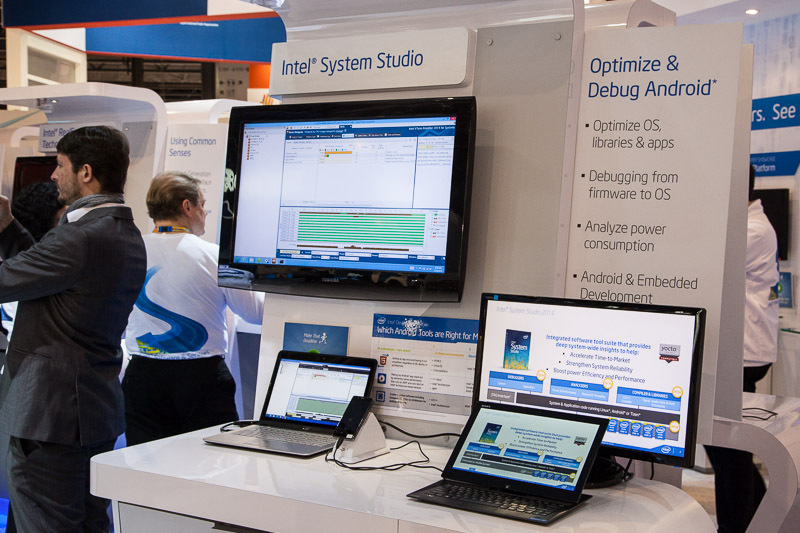
Intel System Studio (ISS)
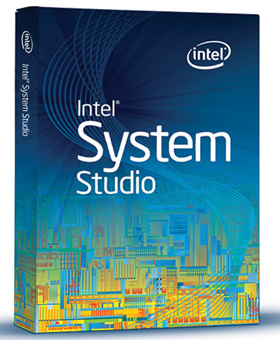
The name of the product hints at the fact that this is a set of tools for system software developers. By and large, the way it is. But you need to reveal a small secret: Intel System Studio was produced on the basis of the long-known Intel Parallel Studio, which is designed to develop high-performance user applications. Without losing any of the properties of its parent, System Studio has acquired several new ones and has been adapted for development for Android, Tizen and Embedded Linux, naturally for the Atom and Core processors. It integrates with the Android SDK and NDK, as well as in the Eclipse development environment.
')
JTAG debugger
The system developer (both the OS and the drivers for it) cannot do without the system debugger, which allows working both in the bootloader and in the system kernel. It is clear that in order to debug a system, you must be a device manufacturer, and it must contain a JTAG interface. All manufacturers slightly file off the system, making it a little better than the original, in their understanding. Some (Samsung, Sony, Dell, HTC, Huawei) have a bigger file, and they provide both their Android launchers and drivers for the original devices. This is what they basically need such a debugger, because after production has been put on stream, root access is hidden in serial mobile phones and tablets and the JTAG connector is removed. And so that especially handy engineers and Chinese masters of cloning cannot dig deeper into the core modules, the interface contacts inside the chip are burned. So, for a regular store-bought device, the JTAG debugger is no more useful than a shaman tambourine.
And if after all you are not Samsung or Dell, but are you developing a smart controller for your house, running Linux? Then “and again, hello!” - the JTAG Distributor will work with the Galileo module based on Intel Quark, about which we have already written a lot. In our demonstration, we show how cool the Intel XDB JTAG debugger works on the Galileo module connected via the inhumanly expensive Intel ITP-XDP 3 (it works with both Quark and Atom and Core). To debug a home smart controller, this is not needed, just use one of the more accessible interfaces.

Intel GPA, VTune Amplifier and Energy Profiler
System Monitor Graphics Performance Analyzer and VTune for Android now go hand in hand. GPA will help you determine how much you have perplexed the GPU in the device, and VTune takes on the CPU performance analysis. We will not describe in detail the merits of the VTune Amplifier profiler, we will only say that now you can profile and optimize both Android system applications, device drivers, and custom Java applications. What is interesting, it can be done simultaneously. Total analysis is especially useful if your Java application uses algorithms that require high performance (for example, image recognition and analysis), which, of course, are written in C / C ++, or use ready-made optimized building blocks that implement DSP processing (they are in the form of IPP for Android is also included in the package). As a result of profiling, we get results simultaneously for Java code and .so binary modules, along with call stacks and timing distribution across the source code. And if there is debug information, then continue to the kernel modules.
But a tool that you probably have not heard about, Intel Energy Profiler. Analyzing Android applications, we can trace how the frequency of the processor has changed over time, and in what states of sleep (C-states) or wakefulness (P-states) it was located. The fact is that, ideally, the processor, as one of the main energy consumers, must either sleep like a baby (C6) or work like a horse (Px) - this is how an ideal energy saving is achieved. There are many intermediate phases between these phases, in which the CPU doesn’t sleep or works relaxedly, but in general they should take much less time than the main ones. However, applications are not considered with this, and they constantly awaken the processor, both in the case (receiving a data packet, processing an event, etc.) and in vain. As a result of energy analysis, we can understand who and how often awakens the processor, and it is possible to deprive someone of such a privilege.
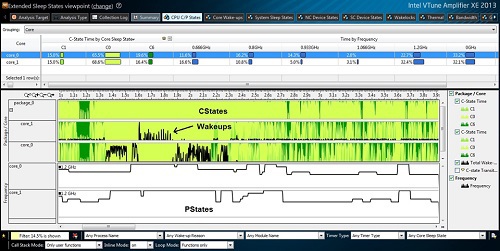
Also interesting for integrators of the system is the comparison of the energy profiles of various applications. There are examples when media players from different vendors forced the system to consume an amount of energy that differs twice on one data stream. Therefore, mobile application developers are thinking about such an unusual feature as the “power consumption” of the program.
The attentive reader will ask, why is this all ordinary application developers? Normal - no need. However, in addition to large companies, there are original middleware developers who offer more efficient codecs, speech recognition modules, communication programs, and other applications that work with various sensors of the device. If they are guided by the Intel SoC at the heart of the device, they need the Intel Systems Studio package, as well as an emulator with the Intel HAXM accelerator. As for the test iron, there is also news announced at the MWC. In addition to retail devices based on Intel chips, you can buy a Dell Venue 8 device and register with a special developer program for systems: the Intel Mobile Development Platform for the Android and Developer Program . In addition to the device, it will be possible to get the Android development tools, VTune Amplifier, Energy Profiler, and the developer's documentation kit. Later, the list of vendors and devices will be expanded.
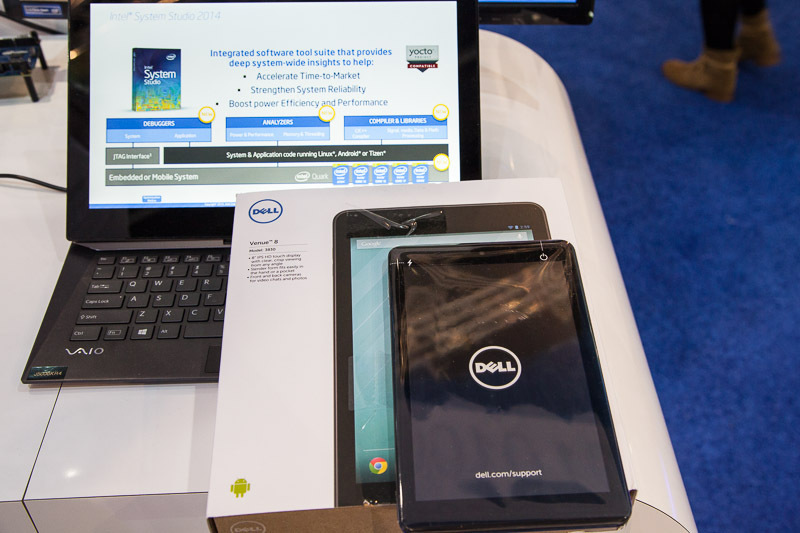

Intel INDE
“Enough about systems, drivers, middleware and other hardware problems !!! I am an ordinary developer of custom Android apps. Although not quite normal. I want my visual reader, recognizer and translator from Chinese street signs to work quickly on ARM and very quickly on Intel chips. ” We also have something to offer you. Coming soon is a product called INDE ( Integrated Native Developer Experience ), in which you will find everything you need for cross-platform development of your advanced and high-performance program, as well as a Media Pack and Intel Android images. At the same time, Intel, oddly enough, turns its face to ordinary members of the community and intends to offer tools at very humane prices, at least at more acceptable prices than ISS.At the exhibition, it was possible to see how the Bouncing Balls application increases its fps even on a rather old Lenovo K900 smartphone simply by replacing the option to compile native code from gcc to icc.
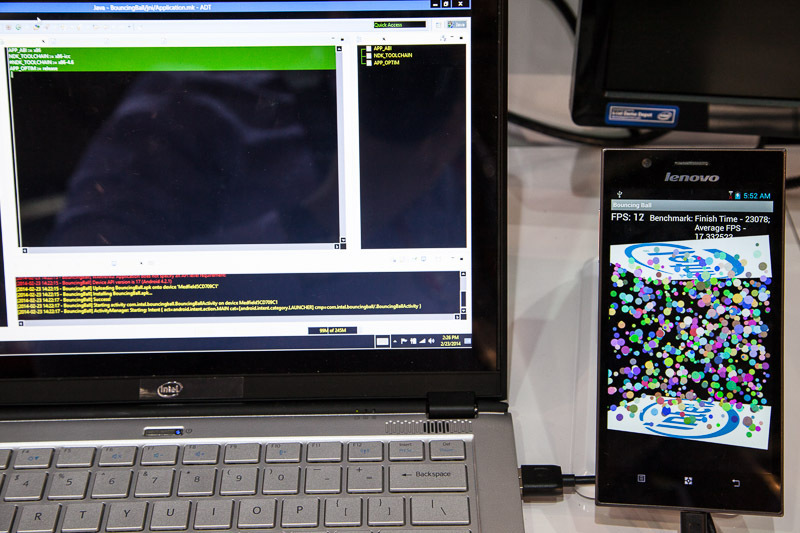
In general, if something seemed interesting to you, go to the page of tools for developing for Android and choose what to try in your project, and the news on INDE will be soon.
Internet of things
In the meantime, our guys from the Developer Relations Division have written down an interesting demo with machines using the Intel Galileo module and the toolkit for Embedded Linux. In fact, they were 30 years late, when, playing the same toy, I lost my temper, losing the race to my older brother. He skillfully took turns and accelerated on the straight, and I pressed the trigger and my machine constantly flew off the track. I could not manage to find the optimal mode and force of pressing the potentiometer, which regulates the voltage, and accordingly, the speed of the machine. Our colleagues literally in three weeks and on their knees assembled a system that regulates engine power, choosing the optimal motion mode, and controlling the passage of fireballs with the help of two cameras suspended from above (with pattern, motion and location recognition on Intel Quark). I would try my brother to contend with me if I had such equipment.
Want to implement an interesting idea on Intel Quark? Register and receive the Intel Galileo Development Kit for IoT .
Intel RealSense Technology
Although not new, in my opinion, one of the most interesting technologies is the gesture recognition SDK. All cinema feints from dragging information on the visual walls, to the management of children in the space fleet, are no longer fantasy, but completely realizable projects. I do not understand why, so far, apart from the well-known game consoles and a pair of contactless paging applications, there are no really breakthrough and useful projects. You do not want to help deaf-and-dumb people to be understood by interlocutors without proficiency in a special language? And can he try to analyze the mood of the client, who is considering your product, or an exhibit? And it will not be necessary to ask him to share his impressions ...
Conclusion
As many have noticed, Intel began to pay a lot of attention to the development of software. But, like other companies operating in the mobile market, it needs collaboration with the developer community. The company offers this collaboration on the Intel Developer Zone, where Intel engineers will carefully consider your suggestions and criticism. And the most zealous critics will beAnd while the MWC continues its work, the
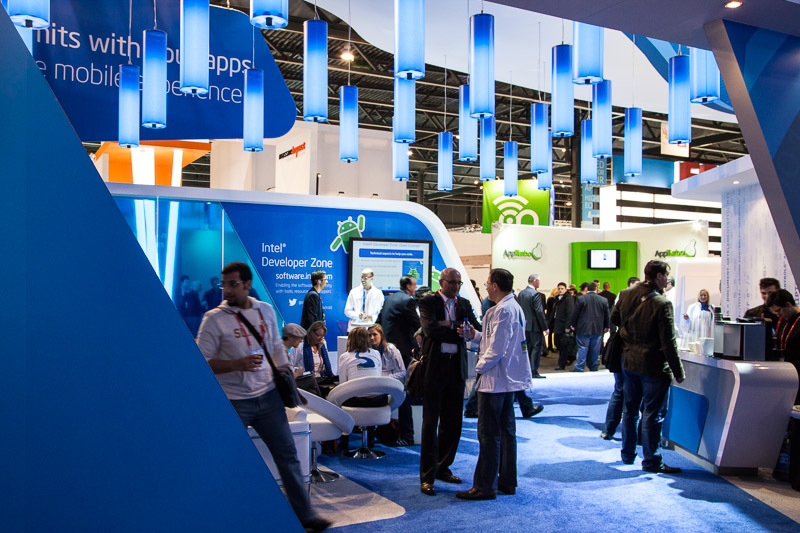
Another couple of photos from the exhibition
Android for peace on the Maidan

To get a tablet from Intel, you need to make a "ku" many times.

"Mom, I swear, a good processor." So, Intel marketing department employees communicate with equipment manufacturers.

Well, all that Intel will say can and will be turned against it.


To get a tablet from Intel, you need to make a "ku" many times.

"Mom, I swear, a good processor." So, Intel marketing department employees communicate with equipment manufacturers.

Well, all that Intel will say can and will be turned against it.

Source: https://habr.com/ru/post/213755/
All Articles